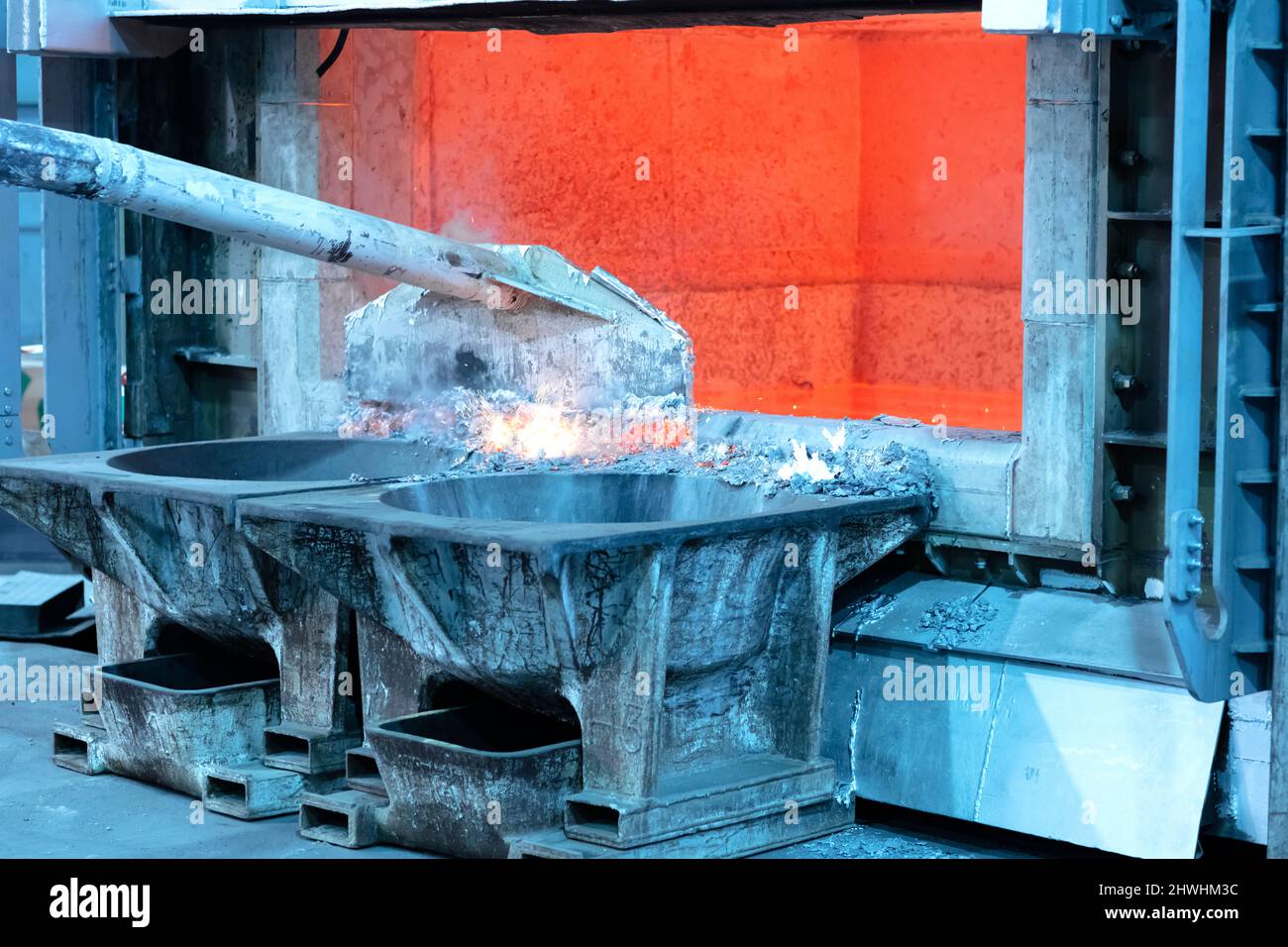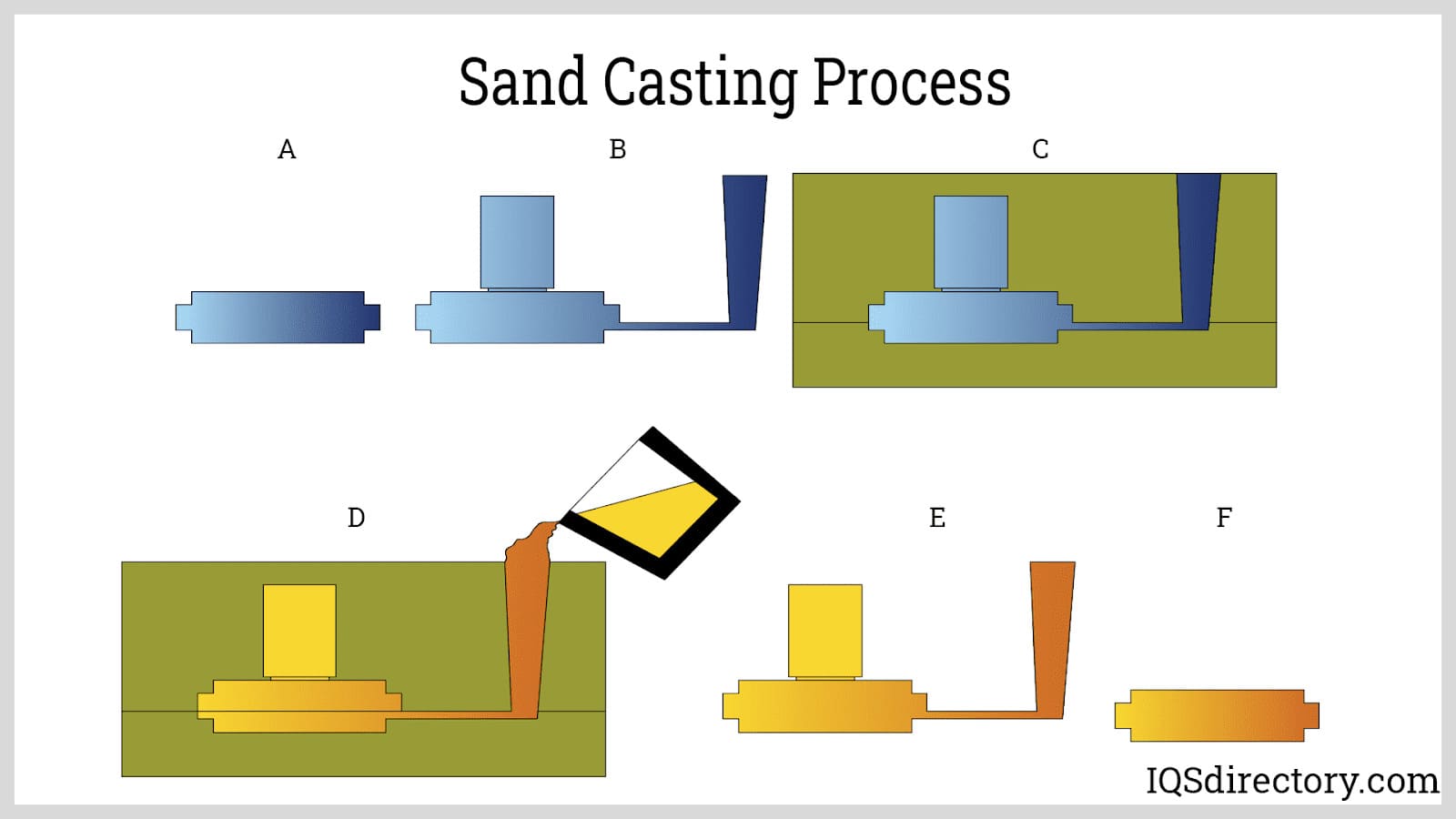Just How Aluminum Foundry Contributes to Developments in Aerospace Engineering
Aluminum foundries are integral to advancements in aerospace engineering. They produce lightweight, high-strength parts that are important for modern-day airplane. With advanced casting techniques, these factories create intricate geometries that improve structural integrity. Additionally, the advancement of exceptional Aluminum alloys sustains the industry's emphasis on gas effectiveness and sustainability. However, challenges remain in the manufacturing procedure. Recognizing these variables exposes the extensive influence of Aluminum on aviation's future.
The Significance of Lightweight Products in Aerospace Layout
As the aerospace sector proceeds to advance, the relevance of lightweight materials becomes progressively apparent. The need for efficiency and sustainability drives engineers to focus on making use of materials that minimize overall weight without jeopardizing architectural stability. Light-weight materials, specifically Aluminum, play a vital role in improving gas efficiency, boosting haul capacity, and increasing the total performance of aircraft.
Moreover, the combination of these products enables innovative styles, allowing suppliers to create more aerodynamic forms that can withstand severe conditions. The decrease in weight not just lowers operational costs but likewise adds to a lowered environmental footprint, aligning with international initiatives towards sustainability in air travel.
Advanced Spreading Techniques in Aluminum Foundries
Advanced spreading strategies in Aluminum shops play a crucial role in aerospace engineering by enabling the production of lightweight and exact elements. Technologies in mold and mildew layout and accuracy spreading procedures are essential in accomplishing suitable efficiency and architectural integrity. Additionally, the development of light-weight alloys boosts the total performance and efficiency of aerospace applications.
Ingenious Mold Design
Ingenious mold style plays a crucial function in the efficiency and performance of Aluminum shops, especially within the aerospace sector. By leveraging innovative products and methods, contemporary mold and mildews can be crafted to hold up against heats and stress, making sure peak efficiency throughout the spreading process. These layouts usually include complex geometries that permit the manufacturing of lightweight yet structurally audio elements, essential for aerospace applications. In addition, the use of computer-aided layout (CAD) software application helps with specific modeling, allowing shops to imitate and fine-tune mold and mildew designs before physical manufacturing begins. This not only boosts the quality of cast components yet likewise decreases waste and lead times, bring about considerable expense financial savings. In general, cutting-edge mold layout is a cornerstone of progress in Aluminum Foundry innovation for aerospace engineering.
Precision Casting Procedures
The effectiveness of ingenious mold styles effortlessly incorporates with accuracy spreading procedures, which are important for producing top notch Aluminum parts in aerospace design. These procedures, consisting of sand casting, die casting, and financial investment spreading, assure the production of intricate geometries with tight resistances. Advanced methods like vacuum spreading and stress pass away casting boost the honesty and surface finish of the last products. Precision spreading minimizes material waste while making best use of the mechanical homes of Aluminum, vital for aerospace applications. On top of that, using real-time tracking and advanced simulation devices during the casting procedure permits prompt changes, resulting in improved quality assurance. Collectively, these accuracy spreading processes placement Aluminum factories at the leading edge of aerospace innovation, sustaining the industry's need for reliability and efficiency.
Lightweight Alloy Development
As aerospace designers seek to boost fuel effectiveness and efficiency, lightweight alloy development becomes a crucial focus in Aluminum foundries. These factories utilize advanced spreading strategies to create alloys that give exceptional strength-to-weight proportions. Advancements in alloy composition, consisting of the consolidation of aspects like lithium and magnesium, allow the manufacturing of materials that withstand severe problems while lowering overall airplane weight. Methods such as die spreading and financial investment casting assist in the accuracy manufacturing of complicated shapes, which are essential for aerospace applications. In addition, continuous research study aims to optimize these alloys for improved mechanical homes and boosted resilience. By prioritizing light-weight alloy development, Aluminum factories greatly contribute to the advancement of aerospace design, paving the method for extra efficient and sustainable aircraft styles.

Enhancing Structural Integrity Through Aluminum Parts
Aluminum parts supply substantial benefits in boosting structural stability within aerospace engineering. Their lightweight nature adds to general effectiveness while preserving strength, which is crucial for aircraft efficiency. Additionally, the stress resistance properties of Aluminum help ensure the durability and integrity of aerospace frameworks under different operational conditions.
Light-weight Material Benefits
While standard materials frequently compromise weight for strength, using Aluminum elements in aerospace design provides significant benefits in structural honesty. Aluminum's lightweight nature adds to general design performance, enabling more structured airplane that take in much less fuel, thereby improving sustainability. The material's exceptional strength-to-weight ratio warranties that elements keep sturdiness without including unnecessary mass. This top quality promotes improved performance and dexterity in flight, in addition to optimized haul capacities. Additionally, Aluminum's resistance to rust prolongs the lifespan of aerospace structures, lowering upkeep expenses and boosting security. As suppliers increasingly take on Aluminum alloys, the aerospace industry experiences a transformative shift towards extra efficient and efficient design services that prioritize both efficiency and ecological responsibility.
Anxiety Resistance Residences
Although different materials possess special homes, Aluminum's exceptional tension resistance attracts attention as an essential consider improving the architectural integrity of aerospace parts. This resistance plays a critical duty in guaranteeing that aircraft can hold up against numerous functional stress and anxieties, consisting of exhaustion, effect, and environmental conditions. Aluminum alloys, specifically engineered for aerospace applications, exhibit high tensile strength while keeping light-weight attributes, allowing engineers to develop much more efficient frameworks - Aluminum Foundry. In addition, the capacity of Aluminum to endure cyclic loading without significant contortion adds to the durability and dependability of aerospace parts. As advancements continue in Aluminum Foundry strategies, the advancement of stress-resistant Aluminum elements promises more renovations in performance, security, and effectiveness throughout the aerospace industry, strengthening Aluminum's duty as a recommended material in modern-day engineering
Gas Performance Improvements Driven by Aluminum Innovations
As the aerospace industry seeks to enhance gas performance, innovative uses Aluminum have actually become a necessary solution. Aluminum's lightweight nature especially lowers aircraft weight, permitting reduced fuel usage during trip. This reduction in weight is essential, as even little declines can result in substantial improvements in general fuel economic climate.
Advanced Aluminum alloys, made for boosted strength and toughness, enable manufacturers to create parts that preserve architectural honesty while lessening mass - Aluminum Foundry. In addition, the assimilation of Aluminum web link in airframes and engine parts helps with enhanced the rules of aerodynamics, adding to decreased drag and raised efficiency
The fostering of Aluminum in aerospace not just satisfies the demand for fuel-efficient layout however also aligns with regulative pressures for lower discharges. As these developments continue to develop, they play a considerable duty in establishing brand-new standards for fuel performance, ensuring that the aerospace sector can fulfill growing ecological and economic challenges.

The Function of Aluminum in Sustainable Aeronautics Practices
The boosting emphasis on sustainable air travel methods has positioned Aluminum as an essential material in the mission for greener aircraft style. Recognized for its lightweight residential or commercial properties, Aluminum significantly lowers aircraft weight, leading to reduced gas intake and emissions. Its recyclability even more enhances its sustainability profile, as Aluminum can be recycled forever without loss of quality. This characteristic supports a circular economic situation within the aviation industry, lessening waste and source depletion.
Innovations in Aluminum alloys have actually improved their toughness and deterioration resistance, permitting for longer solution life and reduced upkeep demands. These developments facilitate the growth of much more effective aircraft frameworks, adding to overall sustainability initiatives. Additionally, Aluminum's thermal conductivity plays a critical duty in energy-efficient designs, improving systems such as warmth exchangers. Collectively, these attributes emphasize Aluminum's pivotal function in progressing lasting air travel, straightening with worldwide campaigns focused on minimizing the environmental influence of flight.
Difficulties Encountered by Aluminum Foundries in Aerospace Production
While Aluminum shops play a vital function in aerospace manufacturing, they deal with significant challenges that can impact production performance and high quality. One major obstacle is the stringent quality control requirements needed in the aerospace sector. Any type of defect can compromise security and efficiency, demanding extensive inspection procedures that extend manufacturing timelines. Additionally, foundries typically emulate varying basic material costs, which can impact rates and earnings. The complexity of Aluminum alloys utilized in aerospace applications further complicates the manufacturing procedure, as accurate formulas are crucial for achieving preferred mechanical residential properties. Skilled labor lacks hinder the ability to maintain high-quality manufacturing levels. Environmental regulations enforce constraints on emissions and waste monitoring, calling for factories to spend in sustainable practices, which can be cost-prohibitive. These elements collectively develop a landscape where Aluminum factories must constantly adjust to satisfy the advancing demands of aerospace production while guaranteeing safety and conformity.
Future Patterns in Aluminum Applications for Aerospace Engineering
With advancements in modern technology and increasing demands for performance, the future of Aluminum applications in aerospace engineering is positioned for considerable transformation. The integration of cutting-edge Aluminum alloys and compounds is expected to boost strength-to-weight ratios, bring about even more fuel-efficient aircraft layouts. Additionally, innovations in additive manufacturing strategies will permit the production of complex Aluminum structures that were previously difficult, optimizing performance and minimizing waste.

Sustainable techniques will play a vital function, with an expanding emphasis on recycling Aluminum to minimize environmental impact. The aerospace industry is most likely to welcome smarter making processes, such as automation and synthetic knowledge, making certain better and accuracy in Aluminum components. Furthermore, partnerships in between Aluminum foundries and aerospace firms will cultivate research study and advancement, leading the way for new applications that fulfill the strict demands of modern aerospace design - Aluminum go right here Foundry. On the whole, the future looks assuring for Aluminum's duty in forming the skies
Regularly Asked Inquiries
What Are the Environmental Impacts of Aluminum Production in Aerospace?
The ecological effects of Aluminum manufacturing in aerospace consist of considerable power intake, greenhouse gas exhausts, and habitat interruption. Furthermore, mining procedures can bring about dirt deterioration and water contamination, raising problems regarding sustainability and eco-friendly balance.
How Does Aluminum Compare to Other Materials in Aerospace Applications?
Aluminum supplies a distinct mix of lightweight buildings, deterioration resistance, and cost-effectiveness contrasted to other products. Its high strength-to-weight ratio makes it especially useful for aerospace applications, boosting gas effectiveness and total efficiency in aircraft style.
What Qualifications Do Aluminum Foundry Employees Requirement for Aerospace Projects?
Aluminum Foundry employees call for customized training in metallurgy and spreading techniques, in addition to knowledge of aerospace market standards. Certifications in quality assurance and security protocols are likewise vital to assure conformity with rigid aerospace project requirements.
Are There Any Safety And Security Issues With Utilizing Aluminum in Aerospace Engineering?
Safety concerns concerning Aluminum in aerospace engineering consist of susceptibility to exhaustion, corrosion, and stress and anxiety cracks. Proper treatment and alloy selection are important to mitigate these dangers, making certain architectural honesty and general security in aerospace applications.
Exactly How Does Aluminum Recycling Benefit the Aerospace Market?
Aluminum recycling substantially profits the aerospace sector by reducing material costs, lessening environmental impact, and saving power. This lasting technique enhances the market's efficiency while advertising the usage of light-weight, high-performance components in airplane production.
Advanced casting methods in Aluminum factories play a vital role in aerospace engineering by allowing the production of light-weight and precise elements. Innovative mold and mildew layout plays a vital duty in the performance and pop over to this site effectiveness of Aluminum foundries, especially within the aerospace sector. As aerospace engineers seek to improve gas effectiveness and performance, light-weight alloy development becomes a crucial focus in Aluminum shops. Aluminum alloys, specifically crafted for aerospace applications, display high tensile strength while maintaining lightweight characteristics, making it possible for engineers to develop extra efficient frameworks. Partnerships between Aluminum shops and aerospace companies will promote research and growth, paving the means for new applications that fulfill the stringent demands of modern-day aerospace design.